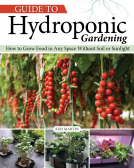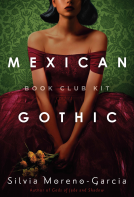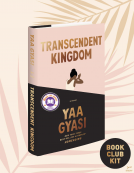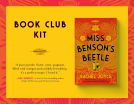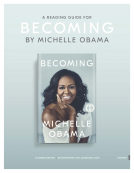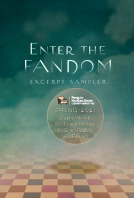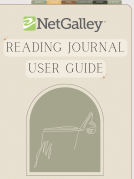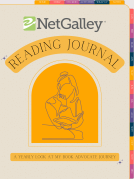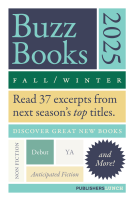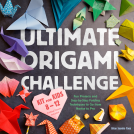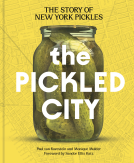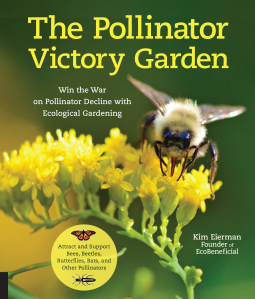
The Pollinator Victory Garden
Win the War on Pollinator Decline with Ecological Gardening; Attract and Support Bees, Beetles, Butterflies, Bats, and Other Pollinators
by Kim Eierman
This title was previously available on NetGalley and is now archived.
Send NetGalley books directly to your Kindle or Kindle app
1
To read on a Kindle or Kindle app, please add kindle@netgalley.com as an approved email address to receive files in your Amazon account. Click here for step-by-step instructions.
2
Also find your Kindle email address within your Amazon account, and enter it here.
Pub Date Jan 07 2020 | Archive Date Dec 23 2019
Quarto Publishing Group – Quarry | Quarry Books
Talking about this book? Use #ThePollinatorVictoryGarden #NetGalley. More hashtag tips!
Description
The passion and urgency that inspired WWI and WWII Victory Gardens is needed today to meet another threat to our food supply and our environment—the steep decline of pollinators. In The Pollinator Victory Garden, environmental horticulturalist, landscape designer, and New York Botanical Garden and Brooklyn Botanic Garden teacher Kim Eierman offers accessible, actionable information and tips for winning the war against the demise of these essential animals.
Pollinators are critical to our food supply and responsible for the pollination of the vast majority of all flowering plants on our planet. Pollinators include not just bees, but many different types of animals, including insects and mammals. Beetles, bats, birds, butterflies, moths, flies, and wasps can be pollinators.
But, many pollinators are in trouble, and the reality is that most of our landscapes have little to offer them. Our residential and commercial landscapes are filled with vast green pollinator deserts, better known as lawns. These monotonous green expanses are ecological wastelands for bees and other pollinators.
With The Pollinator Victory Garden, learn how to transition your landscape into a pollinator haven by creating a habitat that includes pollinator nutrition, larval host plants for butterflies and moths, and areas for egg laying, nesting, sheltering, overwintering, resting, and warming.
Perfect for beginner to intermediate gardeners, this guide offers a wealth of information to support pollinators while improving the environment around you:
- The importance of pollinators and the specific threats to their survival
- How to provide food for pollinators using native perennials, trees, and shrubs that bloom in succession
- Detailed profiles of the major pollinator types and how to attract and support each one
- Tips for creating and growing a Pollinator Victory Garden, including site assessment, planning, and planting goals
- Project ideas like pollinator islands, enriched landscape edges, revamped foundation plantings, meadowscapes, and other pollinator-friendly lawn alternatives
- A Pollinator Victory Garden checklist to help you plan and implement the steps needed to have a thriving pollinator garden
- Plant lists of native tree and shrub species organized by pollinator type and bloom time
The time is right for a new gardening movement. Every yard, community garden, rooftop, porch, patio, commercial, and municipal landscape can help to win the war against pollinator decline with The Pollinator Victory Garden.
Available Editions
| EDITION | Other Format |
| ISBN | 9781631597503 |
| PRICE | $26.99 (USD) |
| PAGES | 160 |
Average rating from 23 members
Featured Reviews
 Reviewer 15098
Reviewer 15098
This book is well written and very useful for someone who’s thinking about starting or enlarging a pollinator garden. I like that it covers habitat requirements as well as food sources for a variety of different pollinators, not just bees and butterflies. Since it’s impossible to provide specific information for every part of the country, the author provides suggestions on where to find additional local or pollinator specific resources.
 Media/Journalist 16509
Media/Journalist 16509
This is an excellent resource to help you turn your yard into a pollinator-friendly habitat. The book features profiles of the types of pollinators and teaches you why you should want them and care about their survival -- even those less loved ones like wasps and flies, which she sells well and does show they help you, your garden and the world. She provides lists of plants for different kinds and explains about things like how to support all the life stages of the butterflies, bees, etc. that you're trying to support. There are lots of lists of what to plant and who it helps, plus great color photos. Eierman also teaches you how to make your yard a good habitat for pollinators to nest and not just eat. As a garden nut, I wish there were more photos of the flowers she suggests, but all in all this is a fantastic book that I highly recommend.
I read a temporary digital ARC of this book for the purpose of review.
 Beth B, Reviewer
Beth B, Reviewer
This is a fantastic resource for how and why to create a pollinator-friendly garden. While it includes good info on pollinator species, plant options and garden design considerations, it's not too in-depth to be off-putting to people new to pollinator gardening. Nice list of resources at the end as well (other books, websites, groups, etc.).
As an avid and ecologically-minded gardener, i have to say: what a great book! I love literally everything about it.
The author discusses the importance of pollinator species from bees to bats to beetles to butterflies...even birds! She lays out what sorts of plants you need to grow to attract various species and how to select plants for your geographical region such that you'll always have something blooming for hosting the pollinators. I particularly appreciated her explanation on the importance of creating habitats for winter, when the pollinators can hole up if they aren't migratory.
Lots of lovely color photos and illustrations fill the book, and the chapter pages themselves are cheerful colors. I particularly enjoyed all the images of various caterpillars and butterflies! This book feels like an exuberant gust of springtime (although i am reading it on a freezing cold December day).
I received a copy of this book from NetGalley in exchange for an honest review.
 Kerry P, Reviewer
Kerry P, Reviewer
Excellent reference for createingpollinator-friendly garden. Explains pollinator species, plant options and garden design. List of resources is included for more information from websites and groups. Would make a good gift for an inspring gardener.
 Kaye T, Reviewer
Kaye T, Reviewer
A wonderful resource for ways to improve the pollinating activity around your place. I like the visuals and discussion of who and what are the pollinators. I like the tips and advice given, that doesn't get overly didactic. I could see this as a great gift idea, and will definitely be used in our house. Highly recommend this book.
 Red A, Reviewer
Red A, Reviewer
I’ve been planting different garden beds for the last couple of years…and just branched into flowers this year. I was reading this book to get some insight on what kinds of flowers I would want to use. This isn’t the book I was looking for, but it was a very interesting book. It seemed like it was more for someone who would be planting lots of spaces to try and make-up for the sad state of our world as far as the insects go that we need. It was very interesting to read about the Victory Garden.
 Catlin P, Reviewer
Catlin P, Reviewer
I like the idea of the "victory garden" approach to pollinator-friendly gardening. It emphasizes the urgency to stop the decline of pollinators, just as people felt an urgency to grow their own food during times of war.
Accompanied by stunning photographs, this book provides a systematic approach to gardening for pollinators. The description of the science behind pollination, pollinator physiology, and the overall ecosystems is accurate, yet easy for the non-scientist to understand. The book focuses not only on choosing the right flowers for a pollinator, but also on providing habitat for pollinators. Helpful tables throughout the book emphasize main points or provide useful lists.
This is simply an outstanding resource for any gardener. As a retired horticulture professor, I thought I had all the books I'd ever want, but I'm going to buy this one when it's published.
 Beth C, Librarian
Beth C, Librarian
A well written and highly informative book on pollinators explaining just what plants and other garden/yard elements are and aren't good for pollinators' life cycles. Pictures are attractive and useful for illustrating points in the text.
This is a great informative guide for gardeners both experienced and novice, and for those of us who want to attract pollinators to our gardens or green spaces. I am a bee lover, and in the UK right now we are feeling the importance of protecting this species, at threat from pesticides still being used, and yet a key provider for our food supply.
All I knew is that they LOVE lavender so I keep a healthy section of the garden full of it, and it is always a hang out for bees, and that butterflies adore buddleia. But there is so much more to learn, and the author shares so many tips, and beautiful photographs.
Dipping in and out of this guide for info when buying new plants, thinking about weeding and even identifying visitors to your garden, is a must.
This would also make a lovely gift for a keen green-fingered friend or relative.
The Pollinator Victory Garden is a new tutorial guide for attracting and protecting pollinators (bees, beetles, butterflies, bats, and others) in the home garden. Written by Kim Eierman and due out 7th Jan 2020, it's 160 pages and will be available in ebook and paperback formats.
This is a very well written and accessible book full of good general advice for doing what we can to support natural pollinators on our own as homeowners and gardeners. I appreciated that the author didn't primarily concentrate on the plight of domestic honeybees (which honestly are not native to most places outside of southern Europe and are thus more 'honey cows' than wild pollinators).
The book has a logical and easy to follow format. The chapters proceed logically and thematically: what pollinators are and what they do, habitat, forage/food, specific pollinators, and specific garden planning and execution. Additionally, the book includes comprehensive appendices covering plant lists, checklists, troubleshooting tips, resource and informational links, and a cross-referenced index.
There are so many books about every single facet of beekeeping and gardening (and beekeeping WITH gardening), but there aren't very many in my experience with a strong emphasis on attracting and supporting indigenous pollinators for diversity and biome health. This is a good one.
Five stars.
 Michelle M, Librarian
Michelle M, Librarian
Nonfiction | Adult
Victory gardens were a thing of wartime Britain (and probably Canada too) – citizens were encouraged to develop kitchen gardens as a war effort, leaving more food for the soldiers, I guess. Or, more likely, diverting agricultural land into space for building military devices. Anyway, the term Victory Garden is being co-opted here to encourage citizens to help support the pollinators – bees, butterflies, beneficial flies, beetles, wasps and even bats (!) – in order to ensure our global food supply. No pollinators means no fertilizing and no apples, cherries, cucumbers, squash, tomatoes – you get the picture. So by turfing the turf and replacing it with flower and vegetable gardens, shrubs, and even piles of leaves and shrubs, we are helping to create habitats that feed, house, water, and protect the creatures that are in a sense feeding us.
But it’s not as easy as sprinkling a packet of seeds. Eierman goes into details to explain how to create a space that will help pollinators thrive, focusing largely on native plants rather than hybrids and clones that don’t create pollen-producing flowers as well as they could. She notes the importance of creating mass plantings with diverse species so there are flowers from early spring through to late fall. She explains which pollinators will be attracted to different kinds of flowers, and how to choose plants that will create places for them to lay their eggs. Yup, the caterpillars that eat our leaves are good. Keep telling me that. Eierman also emphasizes the importance of eco-friendly gardening – no pesticides or herbicides, and limit your lawn space, which she calls pollinator deserts. (She hasn’t seen my dandelion patch, clearly.) She includes some plant lists, but this is more a book about the process of creating a bee-friendly garden than it is a resource for choosing the plants. Those lists vary too widely from region to region for including in the book, but she points the reader to online and print resources that are helpful. Good index included. All in all a great resource as we work hard to ensure our pollinators not only survive but thrive. My thanks to Quarry Books for the temporary digital reading copy provided through NetGalley in exchange for my honest review.
More discussion and reviews of this title: https://www.goodreads.com/book/show/45731564
This book has a wealth of information about how to create a victory garden catering to pollinators of all kinds. It includes not just suggested plants for feeding, but also plants (and other garden areas) that can host the larvae and adult pollinators. There is in depth information about the different types of pollinators- it's not just bees and butterflies- as well as different garden set-ups for any amount of space you have. The focus is on using native plants- flowers, grasses, shrubs, and trees, that your area's native pollinators will like best. The appendix contains a list of tips for a successful garden, a checklist to help you plan your garden, a plant list that lets you see what plant does what at a glance, and an extensive list of helpful books and websites. A great book for gardeners, from first-timers to experienced, who want their garden to be for more than just show, and would make a wonderful family project!
#ThePollinatorVictoryGarden #NetGalley
I look for ways to help win the war for the decline of our pollinators because I really need those pollinators for my vegetable garden. When I started my raised beds over 6 years ago I had tons of bees in my garden so I had a great harvest but over the past couple of years, I am lucky to see one lone bee on my vegetable flowers so I know there is something wrong.
I work in a garden center and I have increased my flowers over the past few years, I have increased in butterflies, birds and I even have some hummingbird months each year but my bees are just not increasing. I was hoping this book would help and I think it has, I have failed to add house for the bees so this is my project for this year.
This book does not give you a list of each flower that will attract each pollinator, this book is to help you make better choices. We see a pretty flower and just automatically think it will attract pollinators but they don’t. This book will help you chose better flowers that they will like, better water sources and housing sources.
 Jane R, Reviewer
Jane R, Reviewer
The Pollinator Victory Garden is a fabulous resource for anyone who is interested in promoting and supporting pollinators in their garden. The author has compiled a variety of information, including the importance of pollinators to our environment, the various types of pollinators that can be attracted, plants that are specific to the various species of pollinators, and how to create habitats for non-migratory pollinators. Since there are so many different planting zones, there are resources given in order to find more local information for plants and pollinators.
This book is well-written, well-research, easy to read and use, and it includes beautiful photographs as well. I highly recommend this book as a useful resource for any gardener.
Many thanks to NetGalley and the publisher for providing a copy of this book for review.
 Reviewer 2883
Reviewer 2883
Though this isn’t a huge book, it’s packed with useful information, charts, diagrams, and gorgeous photos. The information can be adapted for many geographic locations, garden sizes, and weather conditions. No matter how large or small a space, it can be converted to be a pollinator friendly space. B
As the title suggests, Kim Eierman’s The Pollinator Victory Garden is all about helping our bees, wasps, butterflies and other pollinators succeed in a world which is at war with them. So much of their environment has suffered through human actions and this book sets out to help the reader create a haven for these much needed part of the natural world.
“Pollinators are critical to our food supply and responsible for the pollination of the vast majority of all flowering plants on our planet.” - From The Pollinator Victory Garden by Kim Eierman
Kim explains the Important roll pollinators play in our world and she elaborates on the characteristics of each of the kinds of pollinators and what they are looking for. She goes on to simply explain each of the threats to pollinators and the ways we can help them overcome them. She makes suggestions on plants to put into our gardens and how to create pollinator friendly landscapes.
“84% of crops grown for human consumption need pollinators to increase their yields and enhance their quality.” - From The Pollinator Victory Garden by Kim Eierman
It is a fascinating read but predominantly American-orientated in plant suggestions and references. I have been working to plant a bee and butterfly friendly garden but this book expanded my understanding of the other important pollinators as well as sharing new ideas to make my bees and butterflies happier.
If you are looking for guidance for how to make your garden a pollinator haven, this is one to read! It’s a four out of five on the enJOYment scale!
Readers who liked this book also liked:
Silvia Moreno-Garcia
Historical Fiction, Literary Fiction, Sci Fi & Fantasy
Rachel Joyce
Historical Fiction, Literary Fiction, Women's Fiction
Publishers Lunch
General Fiction (Adult), Nonfiction (Adult), Teens & YA
Brian Soonho Yoon
Children's Nonfiction, Crafts & Hobbies
Rebecca Sharpe; Spencer Quinn; Rob Phillips; Matt Goldman; Jenny Elder Moke; Daisy Pearce
Mystery & Thrillers
Sam Morrison
Children's Nonfiction, Crafts & Hobbies, Outdoors & Nature
